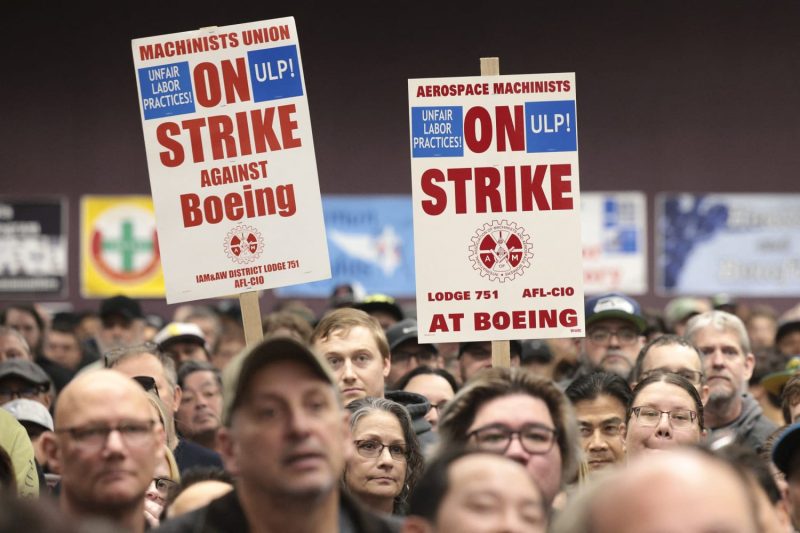Boeing machinists voted against a new labor deal that included 35% wage increases over four years, their union said Wednesday, extending a more than five-week strike that has halted most of the company’s aircraft production, which is centered in the Seattle area.
The contract’s rejection by 64% of the voters is another major setback for the company, which warned earlier Wednesday that it would continue to burn cash through 2025 and reported a $6 billion quarterly loss, its largest since 2020.
The strike is costing the company about $1 billion a month, according to S&P Global Ratings.
New CEO Kelly Ortberg had said reaching a deal with machinists was a priority in order to get the company back on track after years of safety and quality problems.
“My focus is getting everybody looking forward, get them back to work, improve that relationship,” Ortberg told CNBC’s “Squawk on the Street” earlier in the day, when asked about the strike.
Ortberg’s laid out his vision for Boeing’s future, which could includes slimming down the company to focus on core businesses. Earlier this month, he announced Boeing will cut 10% of its global workforce of 170,000 people.
Boeing’s more than 32,000 machinists in the Puget Sound area, in Oregon and in other locations walked off the job on Sept. 13 after overwhelmingly voting down a previous tentative agreement that proposed raises of 25%. The International Association of Machinists and Aerospace Workers union had originally sought wage increases of 40%. It is the machinists’ first strike since 2008.
The latest proposal, announced last Saturday, included 35% raises over four years, increased 401(k) contributions, a $7,000 bonus and other improvements.
Workers had pushed for higher pay amid a surge in living costs in the Puget Sound area. Some machinists were upset about losing their pension plan in a previous contract that they signed in 2014, but the latest proposal didn’t offer a pension.
Boeing agreed in the new contract to build its next aircraft in the Pacific Northwest, which had also been a sticking point with unionized workers after Boeing moved all of its 787 Dreamliner production to a non-union factory in South Carolina.
“We have made tremendous gains in this agreement. However, we have not achieved enough to meet our members’ demands,” said Jon Holden, president of IAM District 751, at a news conference Wednesday night. He said the union will push to go back to the negotiating table.
Boeing declined to comment on the voting results.
The labor strife is the latest in a long list of problems at Boeing, which started the year when a door plug blew out midair from a packed Boeing 737 Max 9, its best-selling plane, reigniting regulator scrutiny of the company.
The strike began as Boeing was working to ramp up production of the 737 and other aircraft.
The extended stoppage is also a challenge for the aerospace supply chain, which is fragile coming out of the pandemic, as the company’s web of suppliers had to train new workers quickly.
Spirit AeroSystems last week said it would temporarily furlough about 700 workers and that layoffs or other furloughs are possible if Boeing machinists’ strike continues.

